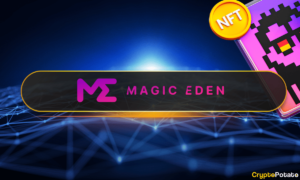DeFi Without Native Rights Is Dead

By Adam Knuckey, Co-Founder and COO of Dolomite
The world is held together with bandaids and scotch tape. Lift the bonnet on any time-served tech, and you’ll find a seething mass of spliced cables and solder. We are on a giant ball of rock hurtling through space at 67,000 mph with our critical infrastructure maintained by a wing and a prayer. The same goes for crypto.
The tokens that whizz their way across blockchain networks are running on tech that has been patched so many times it’s a miracle it still works. Or even more crucially, twisting systems to support use cases that weren’t imagined when their software was first written.
Satoshi didn’t mean for people to trade non-fungible tokens (NFTs) on Bitcoin, and yet Ordinals found a way. Likewise, with DeFi, where the evolved understanding of programmable money has transformed the humble token into a sticky bomb capable of detonating in hard-to-reach places and triggering a chain reaction of second-order effects.
If you can envisage it – perpetual creator royalties, restaking, decentralized perpetual swaps – there’s a way to implement it with tokens. But at times, the theory of what can be done runs into the reality of what’s required to enforce this ability on-chain.
This problem is ultimately a matter of rights – native ones, to be precise. Without them, DeFi is a shadow of the transformative technology it has the potential to be. You can’t shape the future of finance when you’re running legacy software.
It’s a Native Thing
The modern DeFi stack consists of an array of assets and protocols released over a multi-year period. DeFi is lauded for its composability, enabling different protocols and assets to work together, but what this concept overlooks is the sacrifices that are often made in order to fuse disparate, decentralized components.
Taking one project’s token and making it stakeable in another’s is simple. But if the act of doing so removes the token of the utility it was initially endowed with, such as voting rights, we’ve lost something along the way.
Today, there are assets with built-in mechanisms that generate rewards in-kind or in the form of base assets such as ETH. There are assets that have vesting and staking capabilities, each tuned to the function of their ecosystem, enabling users to earn a share of the project’s revenue. And beyond that exist even more advanced, project-specific mechanisms.
All of these functions constitute DeFi native rights that a holder of a project’s token is entitled to. Holding a project’s token means investing in a project, becoming a member of its community, and earning the right to utilize the token’s inbuilt mechanisms, such as staking, earning rewards, and voting. The problem is that when these tokens are utilized throughout the broader DeFi ecosystem, they lose much of this functionality.
Without support for native rights – those core powers initially programmed into the token – DeFi’s value proposition withers, even as it extends its reach through deeper cross-platform integrations. It’s quite a paradox.
If only there were a way of locking productive assets into another protocol without losing their productivity…
Houston, We Have a Solution
Of course, there’s a solution to the native rights problem. This is DeFi, after all, where if we don’t find the solution we’re seeking, we code our own. That’s the whole point of programmable money. Ensuring that native rights are maintained, regardless of where a token is being used, is not so much a technical challenge as it is a social one.
It requires coordination to ensure that token powers are maintained, something that third-party developers have empirically had little incentive to address when integrating non-native assets. “Not my token, not my problem.”
By allowing the gradual erosion of native rights through death by 1,000 integrations, we are chipping away at the very qualities that make decentralized finance so compelling. This is about more than retaining the ability to vote on protocol upgrades while earning yield in some other project’s vault: it’s about retaining the very identity around which DeFi centers.
Innovation doesn’t just mean pushing your shiny new platform with its native token: it can also come from zooming out and looking at what can be done to enhance the existing assets that will be interfacing with your project. Legacy tokens, if you like. Protocols must adopt a model in which participation in one protocol doesn’t come at the expense of the native rights of another.
Respecting native rights doesn’t just preserve DeFi’s existing capabilities: it gives communities a direct incentive to utilize yours in the knowledge that they will retain all of the upside to holding the underlying asset. Make it compatible, and they will come. Make it natively compatible, and they will stay.
Author bio
Adam Knuckey is the Co-Founder and COO of Dolomite, a lending protocol and DEX on Arbitrum. Adam got into crypto as a builder in 2013 and has been building DEX and DeFi applications full-time since 2018.
Binance Free $100 (Exclusive): Use this link to register and receive $100 free and 10% off fees on Binance Futures first month (terms).
PrimeXBT Special Offer: Use this link to register & enter CRYPTOPOTATO50 code to receive up to $7,000 on your deposits.














